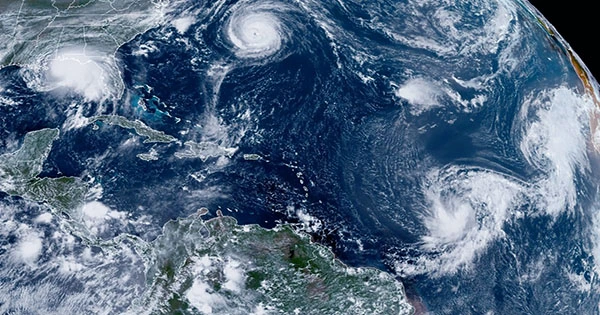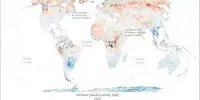Researchers discovered remarkably identical patterns of tree diversity throughout the world’s tropical woods. A survey of over one million trees in 1,568 places discovered that only 2.2% of tree species account for half of the total number of trees in tropical forests across Africa, the Amazon, and Southeast Asia. Each continent has roughly equal numbers of common and unusual species.
A large worldwide collaboration of 356 experts, coordinated by UCL academics, discovered nearly comparable patterns of tree diversity throughout the world’s tropical forests. A study of over one million trees in 1,568 locations, published in Nature, discovered that only 2.2% of tree species account for 50% of the total number of trees in tropical forests across Africa, the Amazon, and Southeast Asia. Each continent has roughly equal numbers of common and unusual species.
While tropical woods are known for their richness, this is the first time scientists have investigated the most prevalent trees in the world’s tropical forests. Scientists estimate that only 1,053 species account for half of the world’s 800 billion tropical forest trees. The other half are comprised of 46,000 tree species. The number of rare species is extreme, with the rarest 39,500 species accounting for just 10% of trees.
Our findings have profound implications for understanding tropical forests. If we focus on understanding the commonest tree species, we can probably predict how the whole forest will respond to today’s rapid environmental changes.
Dr Declan Cooper
Lead author Dr Declan Cooper (UCL Geography and UCL Centre for Biodiversity and Environment Research) said: “Our findings have profound implications for understanding tropical forests. If we focus on understanding the commonest tree species, we can probably predict how the whole forest will respond to today’s rapid environmental changes. This is especially important because tropical forests contain a tremendous amount of stored carbon, and are a globally important carbon sink.”
He stated, “Identifying the frequency of the most common species provides scientists with a unique perspective on tropical forests. Tracking these common species may provide a new approach to characterize these forests and, in the future, measure their health more simply.”
Despite the fact that the tropical forests of the Amazon, Africa, and Southeast Asia each have a unique history and modern environment, the researchers discovered startlingly similar patterns in the fraction of common tree species, which is close to 2.2%.

The Amazon consists of a large region of connected forest, while Southeast Asia is a region of mostly disconnected islands. People only arrived in the Amazon around 20,000 years ago, but people have been living in African and Southeast Asian forests for more than twice that length of time. In terms of the contemporary environment, African forests experience a drier and cooler climate than the other two tropical forest regions.
Given these striking differences, the near-identical patterns of tree diversity suggests that a fundamental mechanism may govern the assembly of tree communities across all the world’s tropical forests. The researchers are not yet able to say what that mechanism might be and it will focus future work on identifying it.
The estimates of common species derive from statistical analyses, which does not provide the names of the common trees. To overcome this, the scientists used a technique known as resampling to estimate which are the most likely names of the common species. Their list of 1,119 tree species names, the first list of common species of the world’s tropical forests, will allow researchers to focus their efforts on understanding the ecology of these species, which in turn can give scientists a shortcut to understanding the whole forest.
Senior author Professor Simon Lewis (UCL Geography and University of Leeds) stated, “We wanted to look at tropical forests in a new way.” Focusing on a few hundred common tree species on each continent, rather than thousands of species about which we know nearly little, can provide new insights into these valuable forests. This emphasis on common species should not detract from the significance of uncommon species. Rare species require special protection, but a research focus on the most common tree species will result in rapid and significant information gains.
The researchers assembled forest inventory data from intact tropical forests that hadn’t been affected by logging or fire. In each of the 1,568 locations, teams identified and recorded every tree with a trunk greater than 10 centimeters in diameter, in a patch of forest, usually one hectare, which is a square of forest measuring 100 meters on each side.
Professor Lewis has been collecting and organizing this information for the past 20 years. The effort is a collaboration between the largest plot networks in the Amazon (Amazon Tree Diversity Network; RAINFOR), Africa (African Tropical Rainforest Observatory Network, AfriTRON; Central African Plot Network), and Southeast Asia (Slik Diversity Network; T-FORCES), which have come together for the first time for the published analysis.
This partnership among hundreds of researchers, field assistants, and local people yielded a total of 1,003,805 trees sampled, including 8,493 tree species, across 2,048 hectares, or nearly eight square miles of forest. The teams identified 1,097 sites in the Amazon totaling 1,434 hectares, 368 plots in Africa totaling 450 hectares, and 103 plots in Southeast Asia totaling 164 hectares.
















